With an election around the corner, accusations, allegations and inferences of antisemitism have hit the headlines of media outlets once more, especially those known more for their sensationalism than their serious commitment to combating this evil.
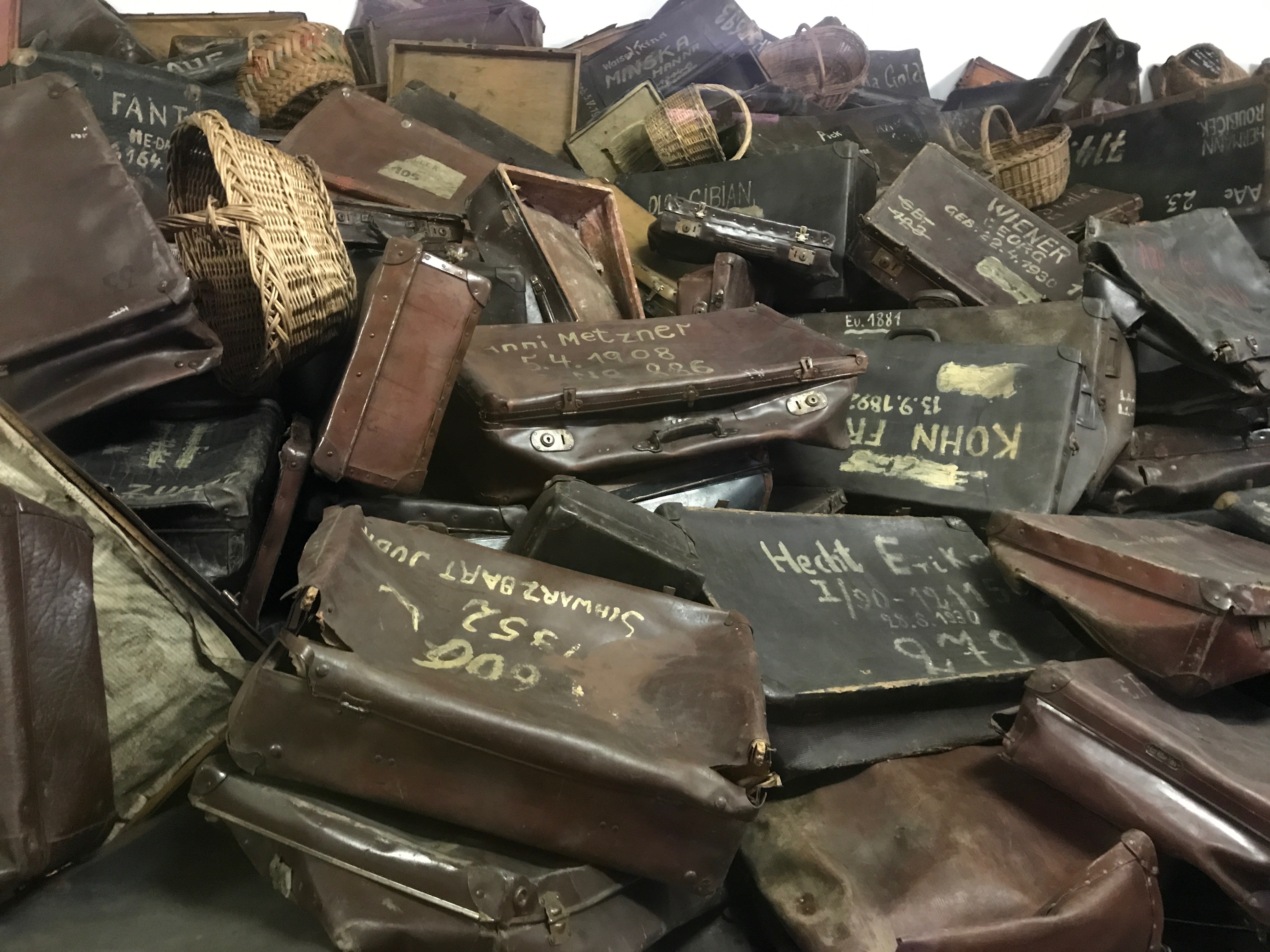 Last Thursday evening I had the privilege of being among a group of 60 people who genuinely cared about antisemitism. They were people so committed to deepening their knowledge about it, that they had travelled to Poland to attend a 4-day educational programme that included a day at Auschwitz/Birkenau, where we could see at first hand the harrowing evidence of what European antisemitism led to in the 1930s and ’40s.
Last Thursday evening I had the privilege of being among a group of 60 people who genuinely cared about antisemitism. They were people so committed to deepening their knowledge about it, that they had travelled to Poland to attend a 4-day educational programme that included a day at Auschwitz/Birkenau, where we could see at first hand the harrowing evidence of what European antisemitism led to in the 1930s and ’40s.
From 6th form students to pensioners our group spanned several generations and ethnic backgrounds, Asian, African, South American, European. There were at least seven Jewish people there. One among them had two relatives who stepped off the cattle truck when it arrived at Birkenau in 1944: her mother who survived, was later transferred to a slave labour camp in Germany and then Belsen from where she was eventually liberated; and her grandmother who was exterminated most likely within hours of disembarking at Birkenau. Another of the Jewish participants lost her grandmother there and probably an aunt too.
The majority of the participants on this trip – organised by the campaigning group Unite Against Fascism – were trade unionists, and many of them were also Labour Party members and activists. The same Labour Party that has had its name dragged through the mud by the right-wing media, and others with easy access to that media, who casually libel the Party from top to bottom as antisemites.
I am Jewish and also a Labour Party member. I gave the keynote presentation on that first evening that would frame our visit, talking about the features and challenges of Jewish life in Poland especially in the frenetic period between the two world wars. I gave graphic examples of the virulent antisemitism in Polish society that was escalating through the 1930s. I described the shock brought about by the Nazi invasion and occupation, the policies to enforce the separation of a very longstanding segment of the population through the creation of ghettos, and I highlighted the courageous resistance that took place in indescribable conditions inside the ghettos and by Partisans outside.
But just before I spoke, we watched a video message that had been filmed in one of the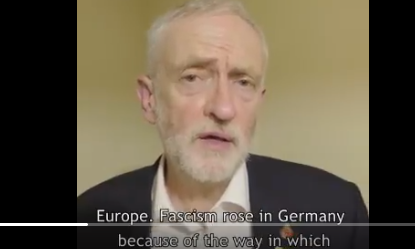 busiest weeks of Jeremy Corbyn’s year. The election had only just been called but he found time to record a message to wish our group well on our visit. This was not electioneering. This was not a social media post to be broadcast by Labour’s Press Team for sharing far and wide. It was simply a private, personal, heartfelt message to our group, from someone who has spent their life confronting racism and fascism and posing an alternative to hatred.
busiest weeks of Jeremy Corbyn’s year. The election had only just been called but he found time to record a message to wish our group well on our visit. This was not electioneering. This was not a social media post to be broadcast by Labour’s Press Team for sharing far and wide. It was simply a private, personal, heartfelt message to our group, from someone who has spent their life confronting racism and fascism and posing an alternative to hatred.
“Your visit to Auschwitz,” Corbyn told us, “will be a poignant experience. I have been there myself.” He described antisemitism as an “evil cult that has to be destroyed in all forms.” He recalled a visit he made, in summer this year, “to a small Jewish museum in Romania next to a railway line, where hundreds of thousands of Jews were rounded up in 1944 and deported to their deaths.” He closed by calling on us to “unite as people to say we will not tolerate racism in any form in our society, be it antisemitism, be it Islamophobia, be it homophobia or any other kind of discrimination.”
I would have dearly loved Rabbi Jonathan Romain to have been a fly-on-the-wall on that first night of our programme. In general terms, Rabbi Romain has been an intelligent and relatively liberal figure among Britain’s rabbinical establishment, welcoming partners in mixed marriages, urging them to play a part in Jewish life; critical of the separatist logic of faith schools, urging schools instead to reflect Britain’s modern multicultural society; supportive of same-sex marriage, and so on. Yet he has fallen hook, line and sinker for the right-wing propaganda that has thrown wild and unsubstantiated allegations of antisemitism at Jeremy Corbyn.
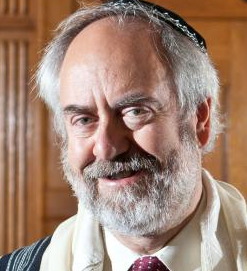 Rabbi Romain wrote a piece for The Times last Friday where he acknowledged that it was not the task of rabbis to suggest which way their congregants should vote, but added: “This needs to change for the coming election. The antisemitism that has come to the fore within the Labour Party during the leadership of Jeremy Corbyn means that normal considerations are superseded. It is astonishing that a mainstream party should have such associations, and that the evidence of it is serious enough for Labour to be investigated by the Equality and Human Rights Commission… I shall therefore be advising my congregants, and anyone else who cares to ask, to vote for whichever party in their constituency is most likely to stop Labour from winning that seat, even if they would never normally support that party.”
Rabbi Romain wrote a piece for The Times last Friday where he acknowledged that it was not the task of rabbis to suggest which way their congregants should vote, but added: “This needs to change for the coming election. The antisemitism that has come to the fore within the Labour Party during the leadership of Jeremy Corbyn means that normal considerations are superseded. It is astonishing that a mainstream party should have such associations, and that the evidence of it is serious enough for Labour to be investigated by the Equality and Human Rights Commission… I shall therefore be advising my congregants, and anyone else who cares to ask, to vote for whichever party in their constituency is most likely to stop Labour from winning that seat, even if they would never normally support that party.”
To make his statement even more pointedly, he added: “This is not a stance against Labour in perpetuity but against Corbyn-led Labour and will be abandoned the moment he is no longer at the helm.”
As has been all too often the case with such statements from high-profile critics of Corbyn, we are in an evidence-free-zone. Innuendo and circular arguments are treated as sufficient by the mainstream media. Romain, evidently, is prepared to give a clean bill of health to any anti-Labour forces that might beat a Labour candidate. In most Labour marginals across the country their closest rivals are the Tories – the party that created the Hostile Environment, a shameful initiative that has devastated the lives of longstanding Caribbean communities, and continues to act against migrant and refugee communities, not least through a network of oppressive migrant detention centres. This is the party led by Boris Johnson who has been widely, and rightly, condemned, not just by minority communities, but across the board, for his racist remarks about “Picanninies with watermelon smiles” and his ridiculing of Muslim women as looking like “letter boxes or bank robbers”.
As for those who consider themselves seriously committed to anti-racism but have fallen for the shallow arguments about Labour’s “tarnished” reputation around antisemitism, 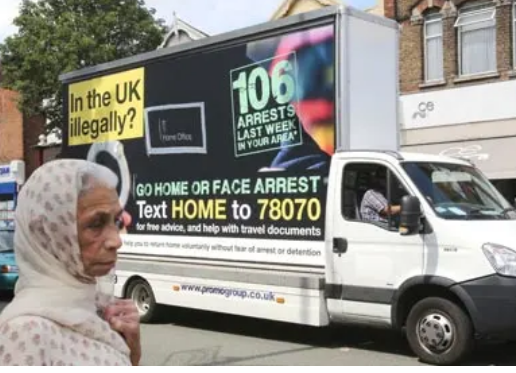 and believe that their Liberal Democrat candidate might just win out over their Labour candidate, they need to understand what the Lib Dems record was in coalition. It was not just the cruel austerity measures that the Lib Dems voted for, with their disproportionate impact on minority ethnic communities, but every abhorrent aspect of David Cameron’s and Theresa May’s Hostile Environment policy too. Swinson & Co may not have come up with the idea of “Go home” vans, but they consistently voted for every single measure that built and reinforced that system of racist treatment entailed by that Hostile Environment.
and believe that their Liberal Democrat candidate might just win out over their Labour candidate, they need to understand what the Lib Dems record was in coalition. It was not just the cruel austerity measures that the Lib Dems voted for, with their disproportionate impact on minority ethnic communities, but every abhorrent aspect of David Cameron’s and Theresa May’s Hostile Environment policy too. Swinson & Co may not have come up with the idea of “Go home” vans, but they consistently voted for every single measure that built and reinforced that system of racist treatment entailed by that Hostile Environment.
Some of us with longer memories might recall the role of the Liberal Democrats in Tower Hamlets in the early 1990s where Lib Dem leaflets linked the presence of Black and Asian people with the housing shortages, giving further credibility to the overtly racist BNP who were polling well. Other leaflets distributed by the Lib Dems accused Labour of diverting funds towards the area’s Asian communities. In the end the BNP won that seat, and the Lib Dems locally were widely seen as playing a despicable and racist role.
I don’t know if any participants on our trip took any notice of Rabbi Romain’s article in The Times. I am fairly sure that none of them give credence to the pro-Tory outpourings of the Sunday Telegraph. On the morning after our day at Auschwitz, I made the mistake of looking at twitter, where I saw an image of the front-page Telegraph headline: “Jews will leave if Corbyn wins”. This is not the first time this ridiculous claim has been made, a claim greeted with derision and disbelief from other Jewish people on our trip – people who have a a very good reason to be extremely sensitive to antisemitism.
Was it the Telegraph itself that authored this message? No, they were quoting James Cleverly, Chair of the Conservative Party, one-time chair of London’s Waste and Recycling Board, which is probably the most appropriate body to deal with a front page story such as this. It has certainly been recycled, and is full of shit!
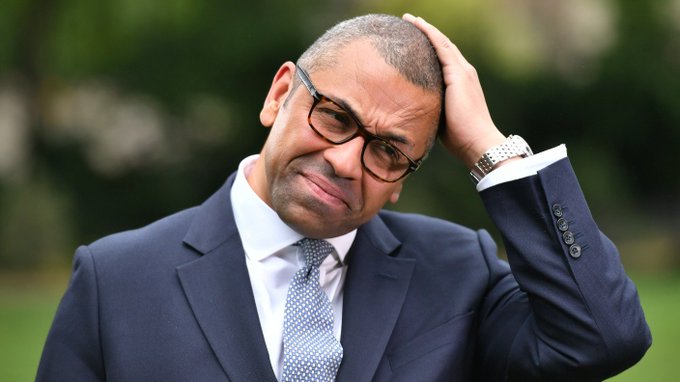 The clear inference in this and similar stories is that Jewish people who fear a Corbyn-led government that is accused of antisemitism will pack their bags and head to the welcoming arms of the Jewish state, Israel, where they will supposedly feel safer. In fact, year on year since Corbyn became party leader, figures confirm that fewer British Jews have been moving to Israel. But the more serious point contained in this suggestion is the not-so-subtle antisemtism of both the Telegraph and Cleverly.
The clear inference in this and similar stories is that Jewish people who fear a Corbyn-led government that is accused of antisemitism will pack their bags and head to the welcoming arms of the Jewish state, Israel, where they will supposedly feel safer. In fact, year on year since Corbyn became party leader, figures confirm that fewer British Jews have been moving to Israel. But the more serious point contained in this suggestion is the not-so-subtle antisemtism of both the Telegraph and Cleverly.
In essence they argue that a Corbyn government will launch a vengeful attack on wealth. Those most committed to private enterprise fear being squeezed by a radical Labour government, and the suggestion seems to be that the Jewish community, often stereotyped as an overwhelmingly rich, business-orientated community, will especially feel that pinch. It is an argument that has been rehearsed by the very right wing Jewish Chronicle editor, Stephen Pollard, who gave space in December 2018 for an appalling article in his paper by Alex Brummer with a headline you might have expected to see in a fascist journal: “The thought of Jeremy Corbyn as PM has Jewish investors running for the hills”.
Three months earlier, Pollard himself, had attacked a tweet by Jeremy Corbyn in which Corbyn said that the people who caused the financial crash of 2008 “call me a threat. They’re right. Labour is a threat to a damaging and failed system rigged for the few.” Pollard tweeted: “This is ‘nudge, nudge, you know who I’m talking about don’t you? And yes I do. It’s appalling” In response I tweeted: “Stephen Pollard and Jeremy Corbyn. One of them seems to think all bankers are Jews. Clue: it is not Jeremy Corbyn.”
But when I read this drivel, stereotyping the Jewish community as capitalists, I think of the many Jews I know well who work in the health service and caring professions who will be boosted by the prospect of a Labour government that is committed to funding their sectors rather than selling them off. I think of the struggling Jewish single parents and pensioners I know, and unemployed Jews, who have every reason to welcome a Corbyn-led government that would boost welfare payments rather than cut them, and would undertake other serious anti-poverty measures. I think of Jews I know who are users of mental health services, whose provision has been cut to the bone by the Tories. I think of elderly Jewish acquaintances living in the East End for whom repairs to their council housing and a well resourced health service are very high on their agendas. These people need a Labour government to be returned on December 12th as much as as their non-Jewish counterparts.
On the same day that I read the Telegraph lead story, I was cheered by seeing announcements of two new initiatives by young Jews in Britain, one called “Vashti media” which is advertising itself as a “a microphone for the Jewish left”; and the other called “Jews Against Boris” – whose politics I think are self-evident.
We concluded our visit to Poland with two meetings on the Sunday morning, one of 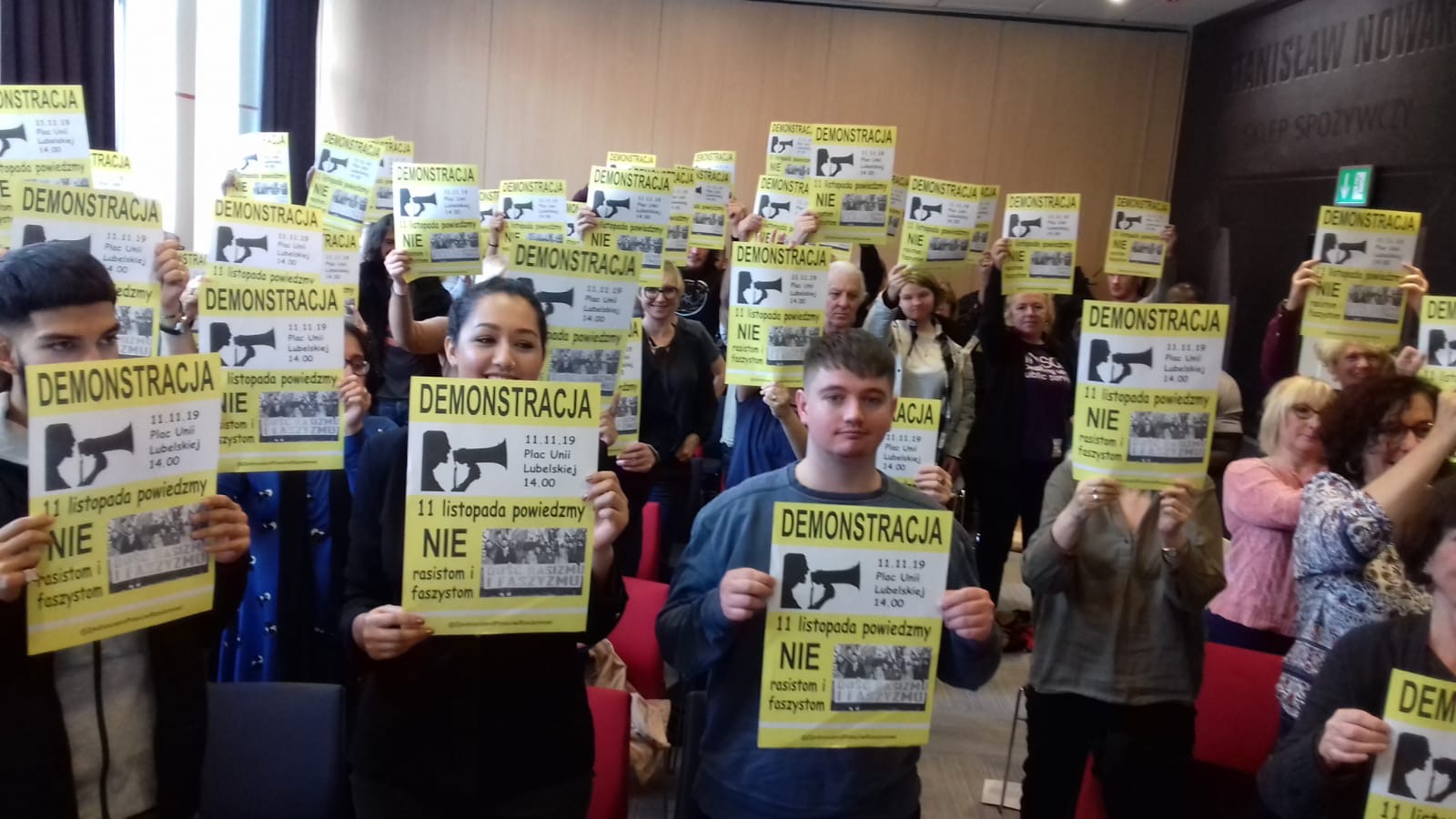 which was addressed by a Andrzej Zebrowski, a Warsaw-based socialist and anti-fascist. He described the gains both of the left and the far right in the recent Polish elections, while acknowledging that the populist-right Law and Justice Party (PiS) had consolidated its control. He spoke of the mobilising efforts of anti-fascists to counter next weekend’s annual nationalist march through Warsaw which in recent years has been flooded with far-right activists.
which was addressed by a Andrzej Zebrowski, a Warsaw-based socialist and anti-fascist. He described the gains both of the left and the far right in the recent Polish elections, while acknowledging that the populist-right Law and Justice Party (PiS) had consolidated its control. He spoke of the mobilising efforts of anti-fascists to counter next weekend’s annual nationalist march through Warsaw which in recent years has been flooded with far-right activists.
As we sat in a cab driving to the airport on Monday, we passed a wall graffitied with a crossed out Star of David in a circle. The populist right and far right in Poland, and other countries central and eastern Europe, have been drawing support from right wingers in Western Europe including Britain’s Tory Party. Those elements in Britain that are leading the false charge against Jeremy Corbyn, as if he were some sort of threat to Jews in Britain, need to stop playing dangerous factional political games and face up to where the threats are really coming from.



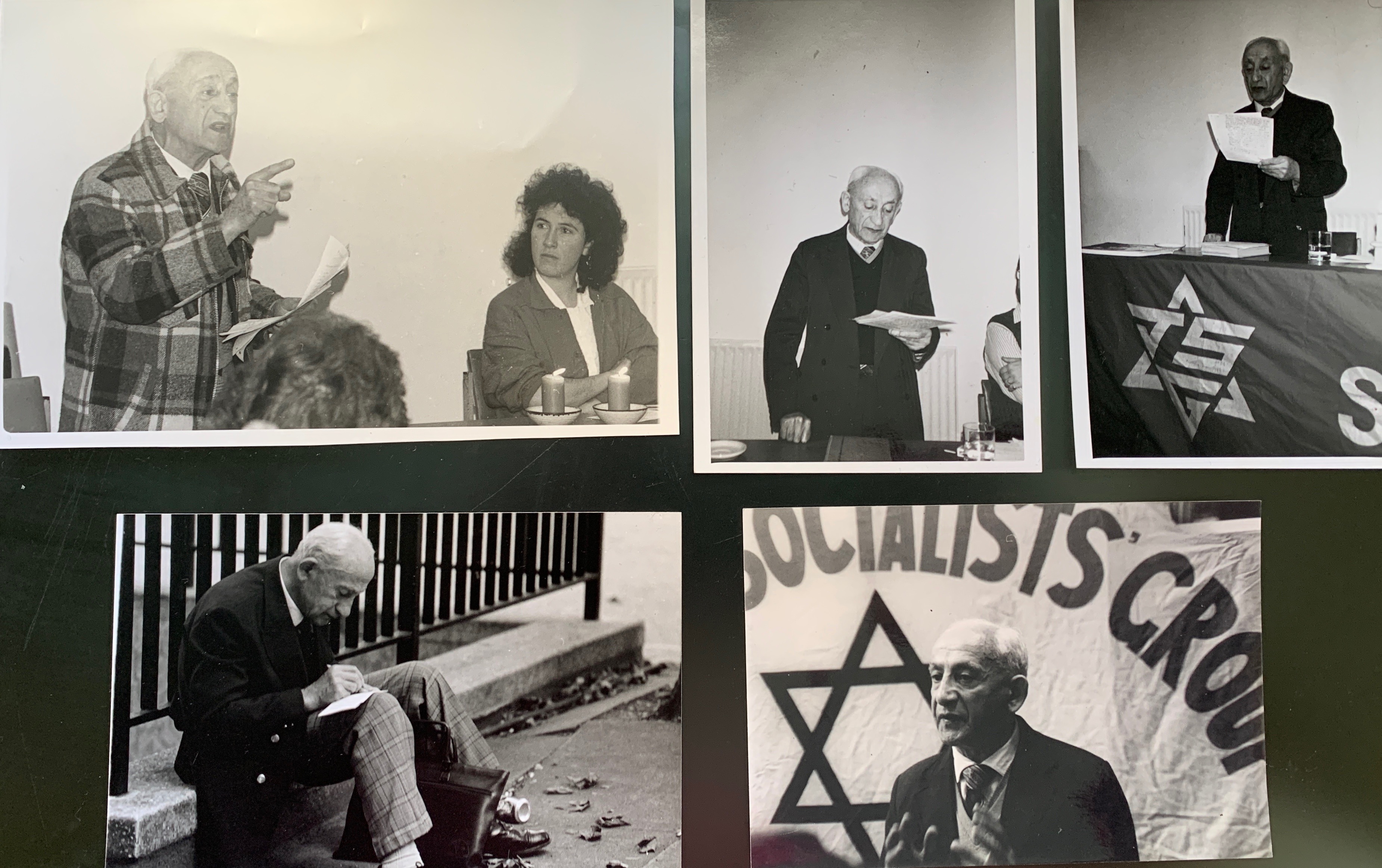
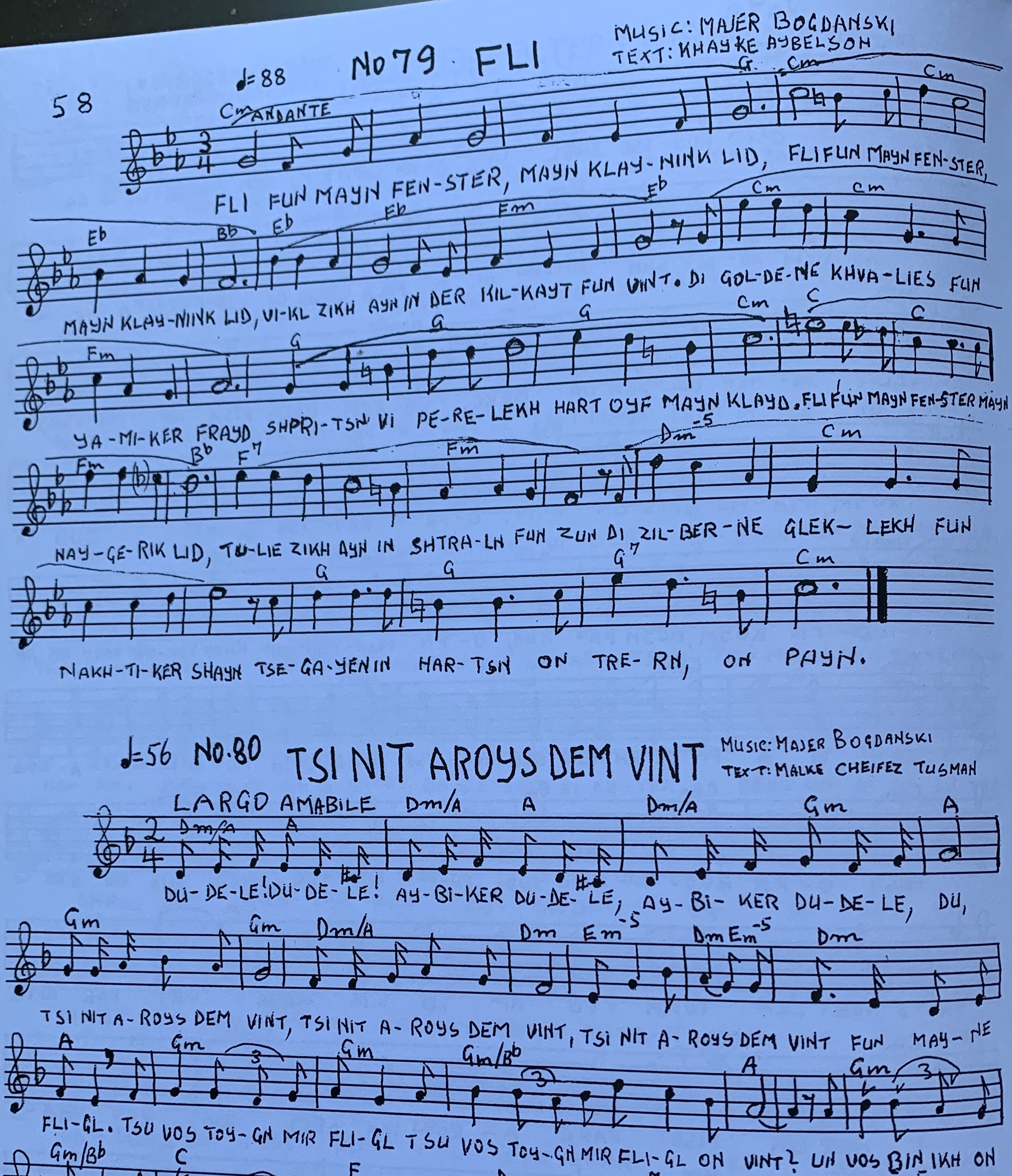 by Yiddish-speaking Jews under Nazi occupation He remembered many cantorial tunes from his time at the Yeshiva. After the Holocaust many of those melodies were simply lost. A culture was destroyed as well as people. But he transcribed more than 50 of the tunes he remembered and deposited them with YIVO, the Yiddish Institute in America; deeply religious tunes salvaged by the most secular of Jews. He also self-published via the radical/anarchist Freedom Press in Aldgate East, four volumes of melodies he had put to Yiddish poems.
by Yiddish-speaking Jews under Nazi occupation He remembered many cantorial tunes from his time at the Yeshiva. After the Holocaust many of those melodies were simply lost. A culture was destroyed as well as people. But he transcribed more than 50 of the tunes he remembered and deposited them with YIVO, the Yiddish Institute in America; deeply religious tunes salvaged by the most secular of Jews. He also self-published via the radical/anarchist Freedom Press in Aldgate East, four volumes of melodies he had put to Yiddish poems. Last Thursday evening I had the privilege of being among a group of 60 people who genuinely cared about antisemitism. They were people so committed to deepening their knowledge about it, that they had travelled to Poland to attend a 4-day educational programme that included a day at Auschwitz/Birkenau, where we could see at first hand the harrowing evidence of what European antisemitism led to in the 1930s and ’40s.
Last Thursday evening I had the privilege of being among a group of 60 people who genuinely cared about antisemitism. They were people so committed to deepening their knowledge about it, that they had travelled to Poland to attend a 4-day educational programme that included a day at Auschwitz/Birkenau, where we could see at first hand the harrowing evidence of what European antisemitism led to in the 1930s and ’40s. busiest weeks of Jeremy Corbyn’s year. The election had only just been called but he found time to record a message to wish our group well on our visit. This was not electioneering. This was not a social media post to be broadcast by Labour’s Press Team for sharing far and wide. It was simply a private, personal, heartfelt message to our group, from someone who has spent their life confronting racism and fascism and posing an alternative to hatred.
busiest weeks of Jeremy Corbyn’s year. The election had only just been called but he found time to record a message to wish our group well on our visit. This was not electioneering. This was not a social media post to be broadcast by Labour’s Press Team for sharing far and wide. It was simply a private, personal, heartfelt message to our group, from someone who has spent their life confronting racism and fascism and posing an alternative to hatred. Rabbi Romain wrote a piece for The Times last Friday where he acknowledged that it was not the task of rabbis to suggest which way their congregants should vote, but added: “This needs to change for the coming election. The antisemitism that has come to the fore within the Labour Party during the leadership of Jeremy Corbyn means that normal considerations are superseded. It is astonishing that a mainstream party should have such associations, and that the evidence of it is serious enough for Labour to be investigated by the Equality and Human Rights Commission… I shall therefore be advising my congregants, and anyone else who cares to ask, to vote for whichever party in their constituency is most likely to stop Labour from winning that seat, even if they would never normally support that party.”
Rabbi Romain wrote a piece for The Times last Friday where he acknowledged that it was not the task of rabbis to suggest which way their congregants should vote, but added: “This needs to change for the coming election. The antisemitism that has come to the fore within the Labour Party during the leadership of Jeremy Corbyn means that normal considerations are superseded. It is astonishing that a mainstream party should have such associations, and that the evidence of it is serious enough for Labour to be investigated by the Equality and Human Rights Commission… I shall therefore be advising my congregants, and anyone else who cares to ask, to vote for whichever party in their constituency is most likely to stop Labour from winning that seat, even if they would never normally support that party.” and believe that their Liberal Democrat candidate might just win out over their Labour candidate, they need to understand what the Lib Dems record was in coalition. It was not just the cruel austerity measures that the Lib Dems voted for, with their disproportionate impact on minority ethnic communities, but every abhorrent aspect of David Cameron’s and Theresa May’s Hostile Environment policy too. Swinson & Co may not have come up with the idea of “Go home” vans, but they consistently voted for every single measure that built and reinforced that system of racist treatment entailed by that Hostile Environment.
and believe that their Liberal Democrat candidate might just win out over their Labour candidate, they need to understand what the Lib Dems record was in coalition. It was not just the cruel austerity measures that the Lib Dems voted for, with their disproportionate impact on minority ethnic communities, but every abhorrent aspect of David Cameron’s and Theresa May’s Hostile Environment policy too. Swinson & Co may not have come up with the idea of “Go home” vans, but they consistently voted for every single measure that built and reinforced that system of racist treatment entailed by that Hostile Environment. The clear inference in this and similar stories is that Jewish people who fear a Corbyn-led government that is accused of antisemitism will pack their bags and head to the welcoming arms of the Jewish state, Israel, where they will supposedly feel safer. In fact, year on year since Corbyn became party leader, figures confirm that fewer British Jews have been moving to Israel. But the more serious point contained in this suggestion is the not-so-subtle antisemtism of both the Telegraph and Cleverly.
The clear inference in this and similar stories is that Jewish people who fear a Corbyn-led government that is accused of antisemitism will pack their bags and head to the welcoming arms of the Jewish state, Israel, where they will supposedly feel safer. In fact, year on year since Corbyn became party leader, figures confirm that fewer British Jews have been moving to Israel. But the more serious point contained in this suggestion is the not-so-subtle antisemtism of both the Telegraph and Cleverly. which was addressed by a Andrzej Zebrowski, a Warsaw-based socialist and anti-fascist. He described the gains both of the left and the far right in the recent Polish elections, while acknowledging that the populist-right Law and Justice Party (PiS) had consolidated its control. He spoke of the mobilising efforts of anti-fascists to counter next weekend’s annual nationalist march through Warsaw which in recent years has been flooded with far-right activists.
which was addressed by a Andrzej Zebrowski, a Warsaw-based socialist and anti-fascist. He described the gains both of the left and the far right in the recent Polish elections, while acknowledging that the populist-right Law and Justice Party (PiS) had consolidated its control. He spoke of the mobilising efforts of anti-fascists to counter next weekend’s annual nationalist march through Warsaw which in recent years has been flooded with far-right activists. Warsaw 19th April, 2019, 12 noon. Crowds gather either side of the 11 metres high Ghetto Fighters’ monument made of granite that, ironically, was sourced by the Nazis. They intended to build a monument to mark their victory in Warsaw. They never did. Warsaw was a city of resistance. They would have had to build it on rubble in any case. Their only way of suppressing the people of Warsaw, ultimately, was by destroying large sections of it. They ghettoised the Jews who had made up a third of the city’s pre-war population, and deported most of them to the death camp at Treblinka. They put down a remarkable, three-week long guerrilla campaign by hundreds of barely-trained fighters aged from 13-40 years of age. They terrorised Warsaw’s non-Jews, defeating the uprising they led 16 months later. Small numbers of Jews who survived the burning of the ghetto in 1943 were hidden but emerged to fight in the ’44 city uprising.
Warsaw 19th April, 2019, 12 noon. Crowds gather either side of the 11 metres high Ghetto Fighters’ monument made of granite that, ironically, was sourced by the Nazis. They intended to build a monument to mark their victory in Warsaw. They never did. Warsaw was a city of resistance. They would have had to build it on rubble in any case. Their only way of suppressing the people of Warsaw, ultimately, was by destroying large sections of it. They ghettoised the Jews who had made up a third of the city’s pre-war population, and deported most of them to the death camp at Treblinka. They put down a remarkable, three-week long guerrilla campaign by hundreds of barely-trained fighters aged from 13-40 years of age. They terrorised Warsaw’s non-Jews, defeating the uprising they led 16 months later. Small numbers of Jews who survived the burning of the ghetto in 1943 were hidden but emerged to fight in the ’44 city uprising. pink/purple banner has the slogan “We will outlive them!” in several languages including Yiddish – the mother tongue of Warsaw’s Jews that Hitler’s forces tried to to bury with the Jews. But on this day, nearly 75 years after Hitler died, Yiddish words are again sung on Warsaw’s streets.
pink/purple banner has the slogan “We will outlive them!” in several languages including Yiddish – the mother tongue of Warsaw’s Jews that Hitler’s forces tried to to bury with the Jews. But on this day, nearly 75 years after Hitler died, Yiddish words are again sung on Warsaw’s streets. resistance in Nazi-occupied Poland. Alongside the Bund flags is one with the International Brigade colours celebrating those who left Poland to fight Franco’s fascists in Spain. One side of the banner is in Yiddish – underlining the role played by internationalist Jews in the Naftali Botwin company of the Dombrowski Battalion.
resistance in Nazi-occupied Poland. Alongside the Bund flags is one with the International Brigade colours celebrating those who left Poland to fight Franco’s fascists in Spain. One side of the banner is in Yiddish – underlining the role played by internationalist Jews in the Naftali Botwin company of the Dombrowski Battalion. from a Warsaw school that emphasises its multicultural curriculum, sings resistance songs in Yiddish. Few, if any of them, are Jewish but their diction is perfect and their identification with the meaning of what they sing shines through. Some songs are familiar, others new to us. We had spent the previous evening with “Warszawianka” – a revolutionary choir who led a workshop with us in the working class district of Praga.
from a Warsaw school that emphasises its multicultural curriculum, sings resistance songs in Yiddish. Few, if any of them, are Jewish but their diction is perfect and their identification with the meaning of what they sing shines through. Some songs are familiar, others new to us. We had spent the previous evening with “Warszawianka” – a revolutionary choir who led a workshop with us in the working class district of Praga.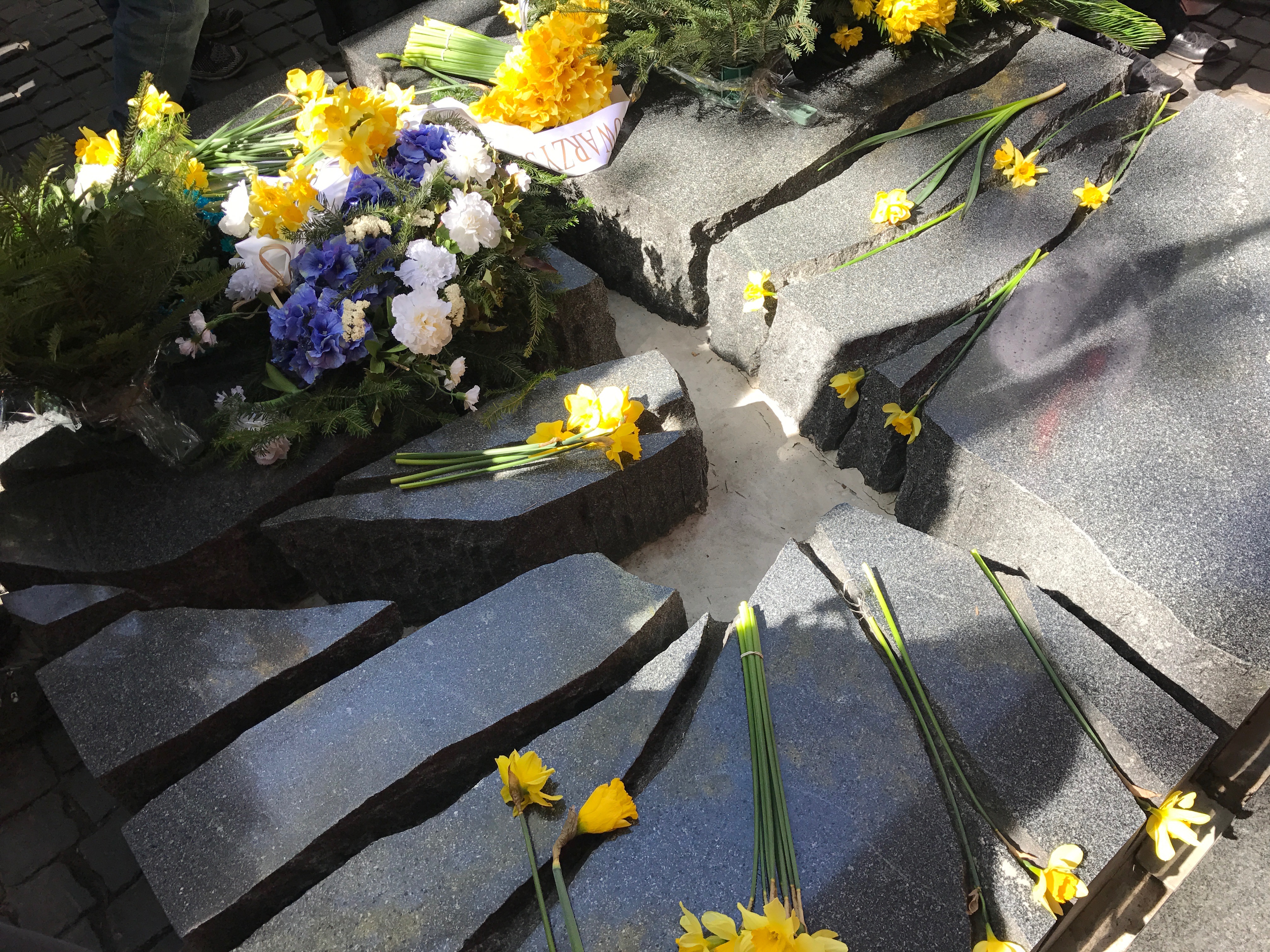 before we move over to the sculpture of a shattered world to represent the courageous Bundist, Szmul Zygielbojm who committed suicide in London as a political act, having read of the final destruction of the Warsaw Ghetto, and the allies’ failure at the Bermuda Conference to propose drastic rescue action. This monument is particularly poignant for us, as it was our group working together with Bundist survivors, who established a plaque for Zygielbojm in London in the 1990s. Here the cracks in the shattered world are soon crammed with daffodils, the flower resembling the Yellow star in bloom, which Nazis made Jews wear in Germany, and some other lands under Hitler’s regime. The Bundist, Marek Edelman, the last surviving member of the command group that led the Ghetto Uprising, brought daffodils to such ceremonies until he died in 2009
before we move over to the sculpture of a shattered world to represent the courageous Bundist, Szmul Zygielbojm who committed suicide in London as a political act, having read of the final destruction of the Warsaw Ghetto, and the allies’ failure at the Bermuda Conference to propose drastic rescue action. This monument is particularly poignant for us, as it was our group working together with Bundist survivors, who established a plaque for Zygielbojm in London in the 1990s. Here the cracks in the shattered world are soon crammed with daffodils, the flower resembling the Yellow star in bloom, which Nazis made Jews wear in Germany, and some other lands under Hitler’s regime. The Bundist, Marek Edelman, the last surviving member of the command group that led the Ghetto Uprising, brought daffodils to such ceremonies until he died in 2009 Marek Edelman dissented and sought to escape through the sewers. As we walked towards Mila 18 we were found among the crowd by Hania Szmalenberg, who earlier in the week walked us through the memorials and showed us how she had re-landscaped the original memorial and and added one in English, Polish and Yiddish closer to the road.
Marek Edelman dissented and sought to escape through the sewers. As we walked towards Mila 18 we were found among the crowd by Hania Szmalenberg, who earlier in the week walked us through the memorials and showed us how she had re-landscaped the original memorial and and added one in English, Polish and Yiddish closer to the road.
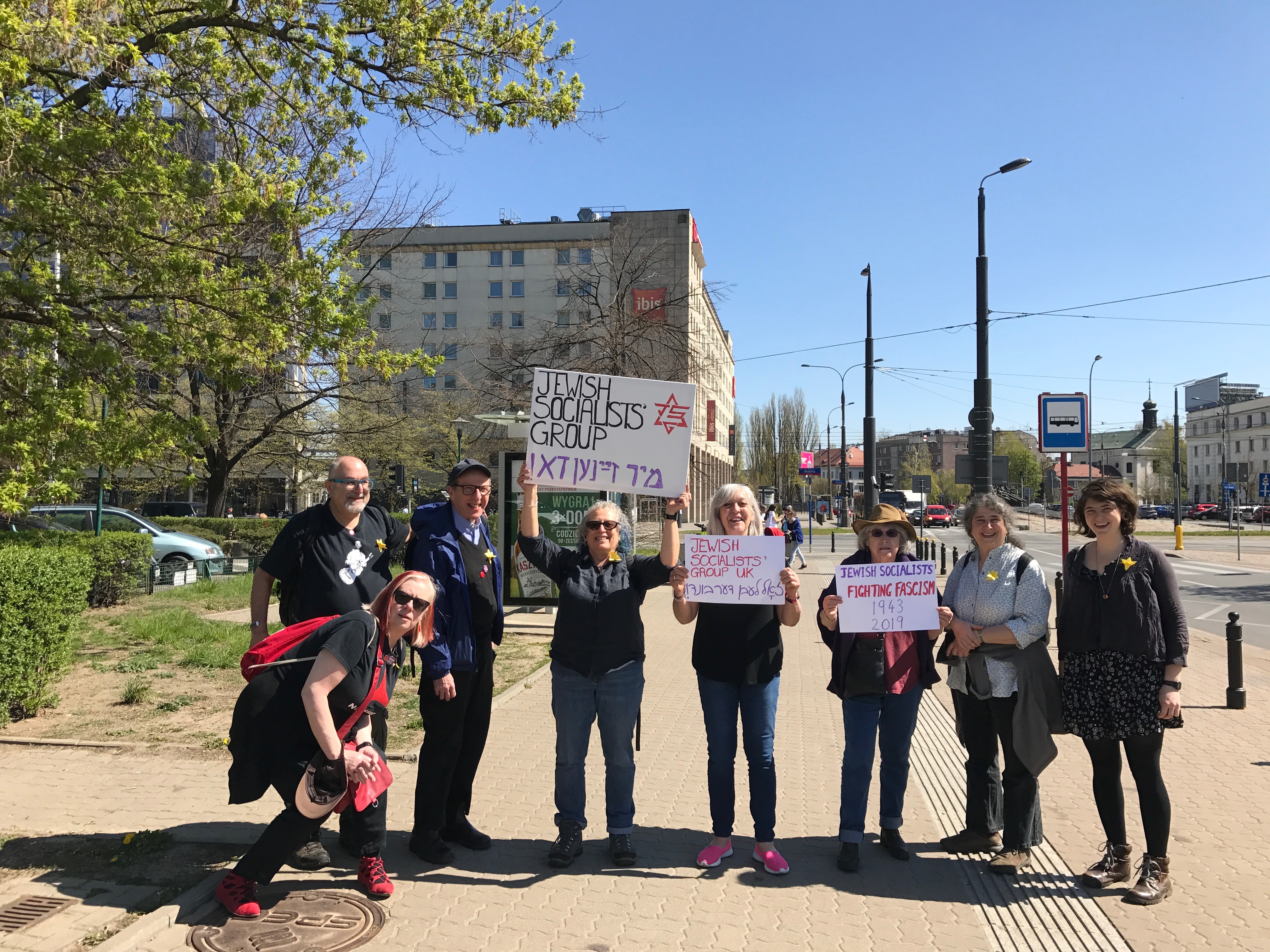
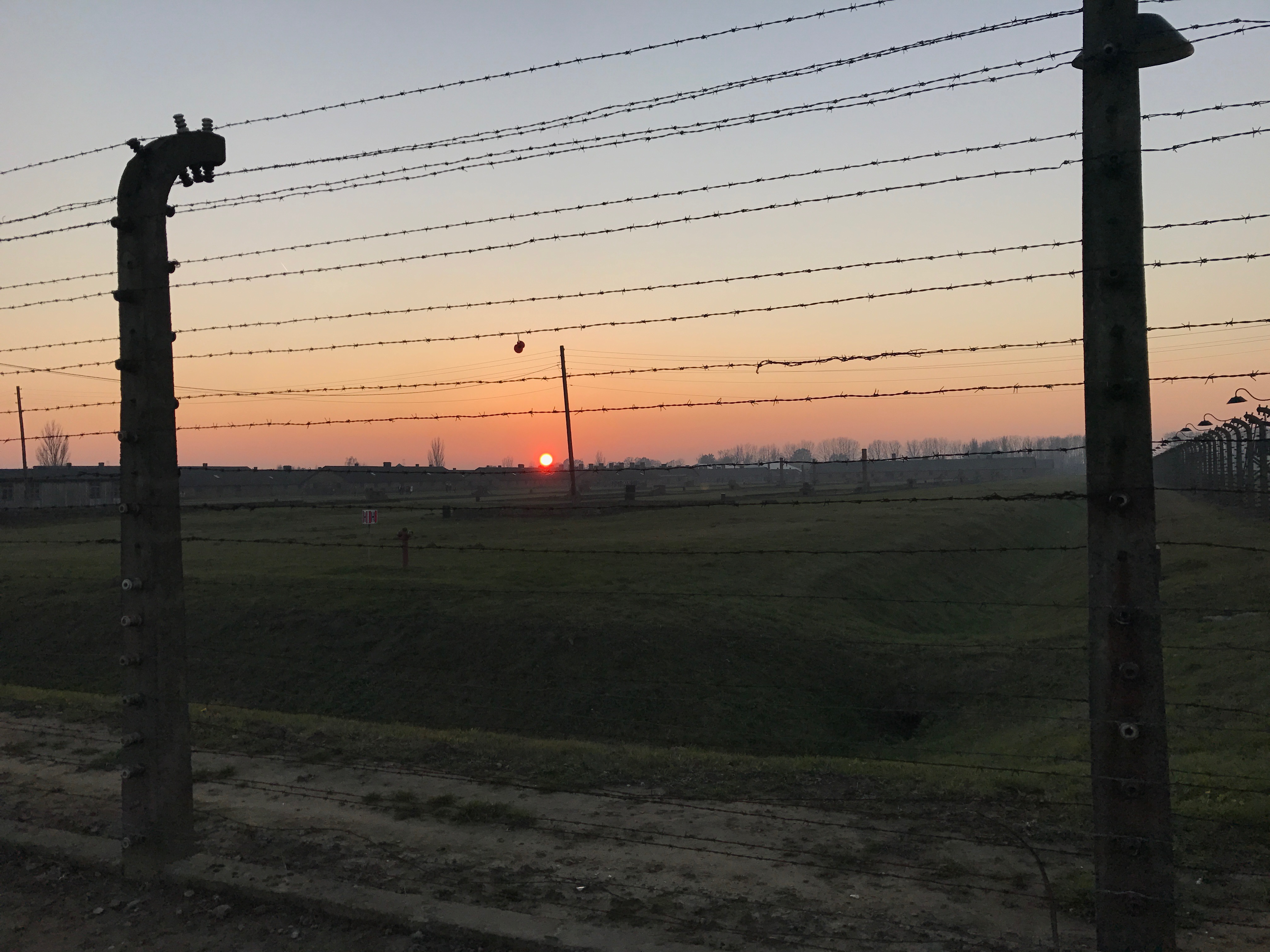 We placed chairs in a circle and waited to see who would come. Half an hour earlier our group of 60 anti-racists and trade unionists had returned from a day visiting Auschwitz and the remnants of the vast expanse of crumbling barracks, cut through by a railway line, that had been the death camp of Birkenau.
We placed chairs in a circle and waited to see who would come. Half an hour earlier our group of 60 anti-racists and trade unionists had returned from a day visiting Auschwitz and the remnants of the vast expanse of crumbling barracks, cut through by a railway line, that had been the death camp of Birkenau.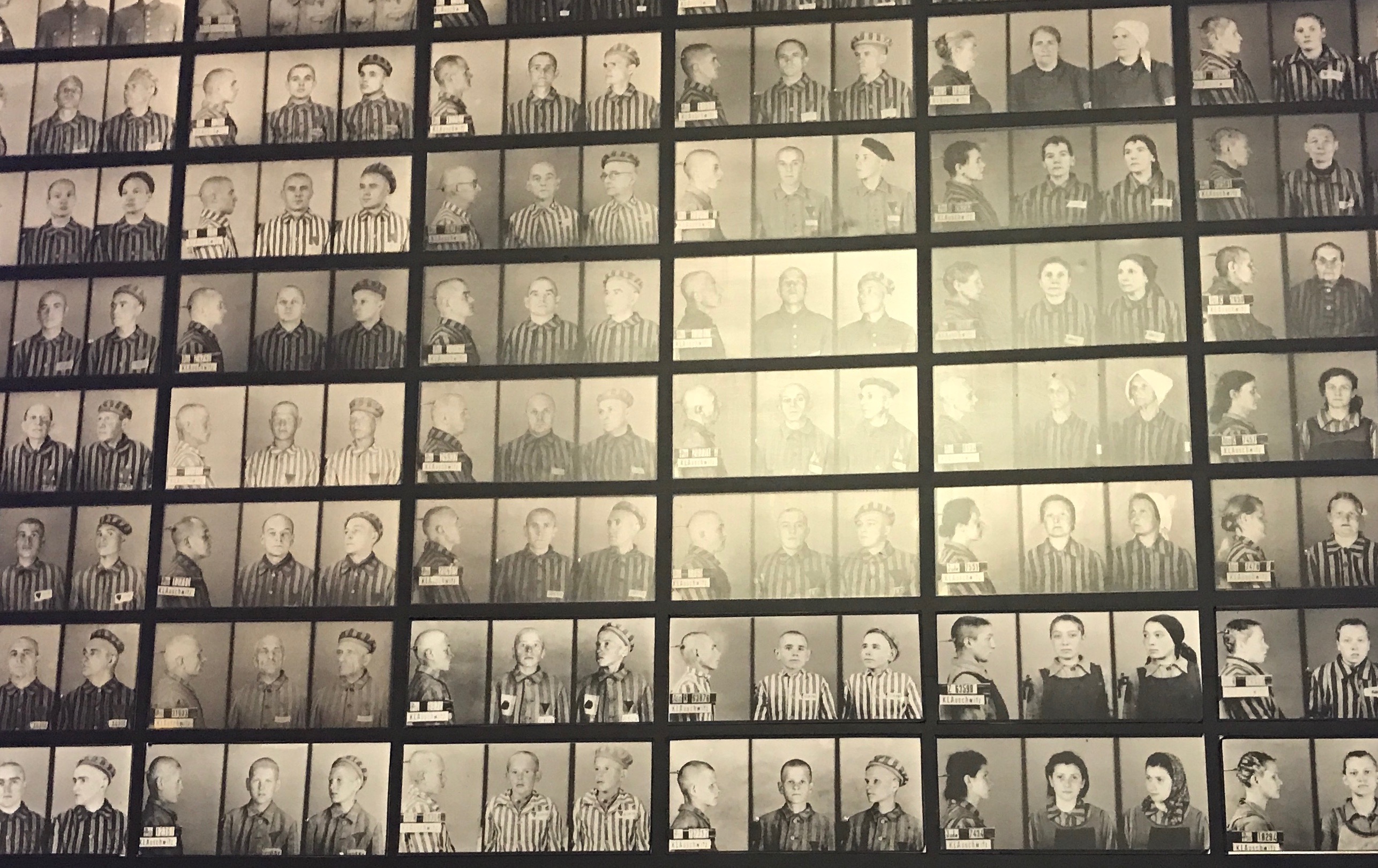
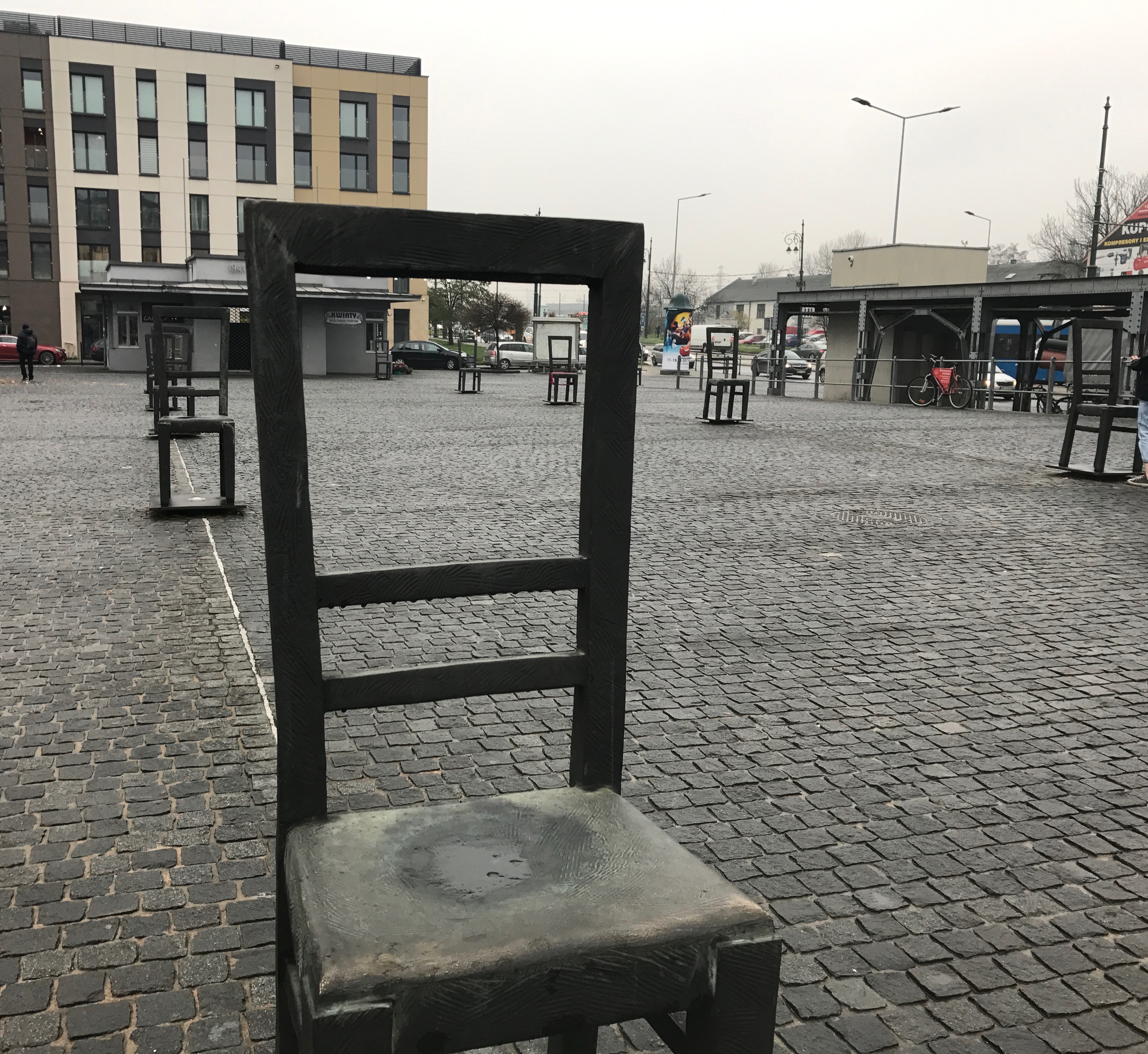 We saw the poignant artistic monument created at the Umschlagplatz (where Jews were assembled for deportation) of 70 large wooden chairs across this square, each one symbolising 1,000 pre-war Krakow Jews, who died in death camps, in the Krakow ghetto, or at the nearby slave labour camp. The walk ended at a museum on the site of Oskar Schindler’s factory, telling the detailed story of how the Nazis subjugated and separated Krakow’s population and ghettoised the Jews before deporting them for extermination. That evening, a further talk by Donny Gluckstein, dissected the economics and politics of 1930s Europe, to analyse how the Holocaust could have been possible.
We saw the poignant artistic monument created at the Umschlagplatz (where Jews were assembled for deportation) of 70 large wooden chairs across this square, each one symbolising 1,000 pre-war Krakow Jews, who died in death camps, in the Krakow ghetto, or at the nearby slave labour camp. The walk ended at a museum on the site of Oskar Schindler’s factory, telling the detailed story of how the Nazis subjugated and separated Krakow’s population and ghettoised the Jews before deporting them for extermination. That evening, a further talk by Donny Gluckstein, dissected the economics and politics of 1930s Europe, to analyse how the Holocaust could have been possible.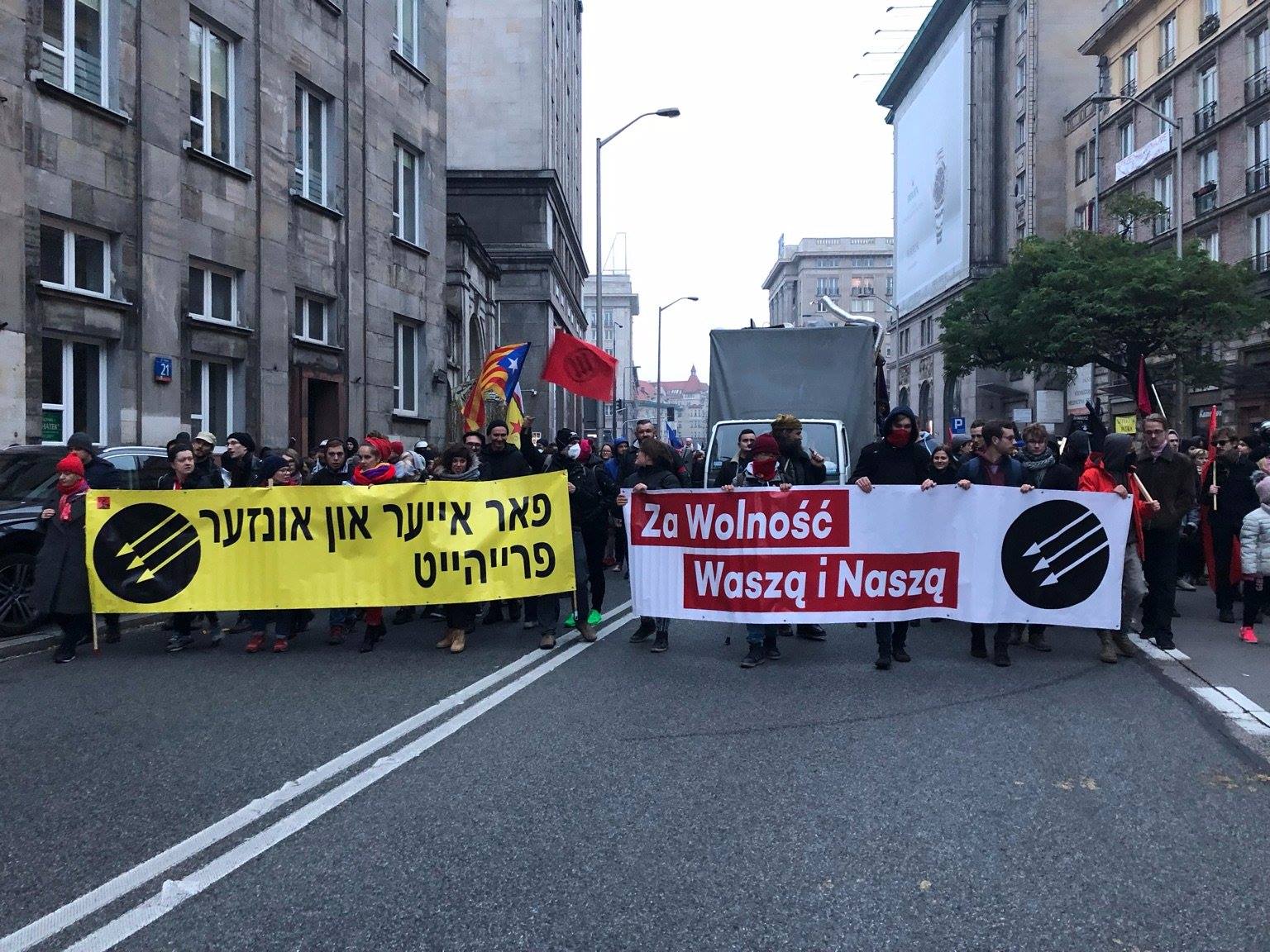 fascist resistance was also present in Warsaw as progressives held an alternative march and anti-fascist rave. This march was led by two banners in Yiddish and Polish held side by side, translating to “For your and our freedom”. This slogan was first used in a Polish rising against the Tsarist Empire in 1831, then revived in the Spanish Civil War by the Botwin Company of the Dombrowski Battalion, and later by Bundists in the Warsaw Ghetto resistance.
fascist resistance was also present in Warsaw as progressives held an alternative march and anti-fascist rave. This march was led by two banners in Yiddish and Polish held side by side, translating to “For your and our freedom”. This slogan was first used in a Polish rising against the Tsarist Empire in 1831, then revived in the Spanish Civil War by the Botwin Company of the Dombrowski Battalion, and later by Bundists in the Warsaw Ghetto resistance. These are also the main unsavoury groups that Tory MEPs had no scruples about lining up with, in a whipped vote, to defend the populist Hungarian regime, led by Viktor Orban from censure and possible sanctions. Like those movements listed above, his regime draws support from those who appreciate its Islamophobic and viciously anti-migrant and refugee rhetoric and actions, and are equally happy when he adds open antisemitism and anti-Roma prejudice to the mix.
These are also the main unsavoury groups that Tory MEPs had no scruples about lining up with, in a whipped vote, to defend the populist Hungarian regime, led by Viktor Orban from censure and possible sanctions. Like those movements listed above, his regime draws support from those who appreciate its Islamophobic and viciously anti-migrant and refugee rhetoric and actions, and are equally happy when he adds open antisemitism and anti-Roma prejudice to the mix.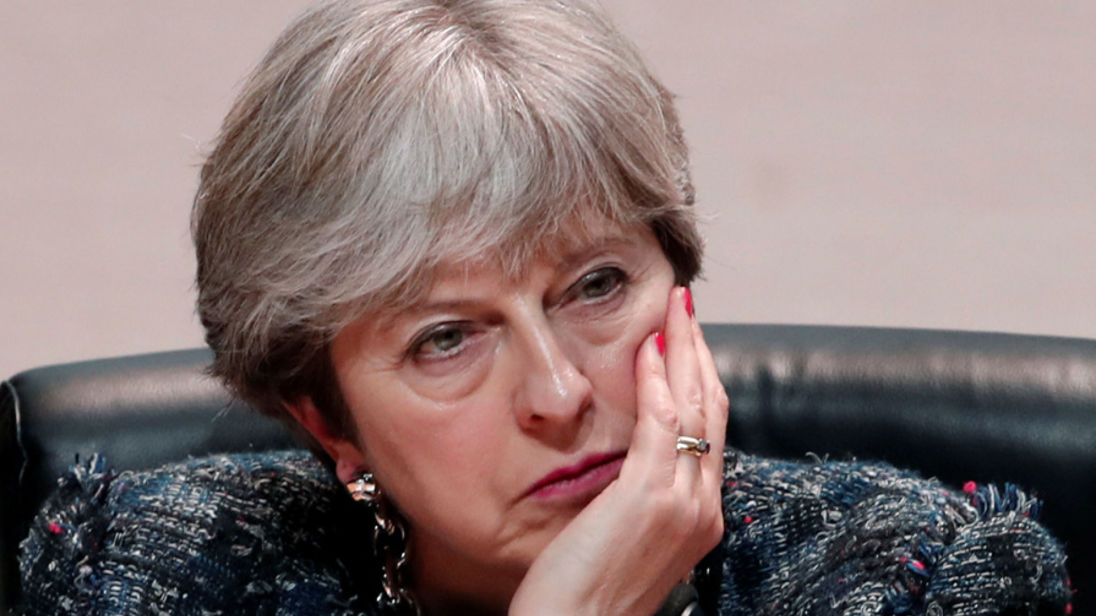 credulity when claiming anti-racist credentials, and she knows it, do, but what does she do when she sees her MEPs taking the side of the racists and fascists? She refuses to take any responsibility for the way her MEPs were voting to defend such a man, and such a regime.
credulity when claiming anti-racist credentials, and she knows it, do, but what does she do when she sees her MEPs taking the side of the racists and fascists? She refuses to take any responsibility for the way her MEPs were voting to defend such a man, and such a regime.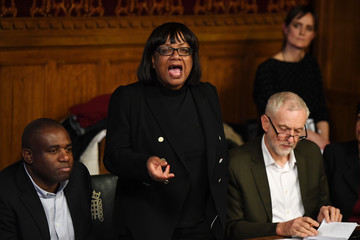 Labour meanwhile, in keeping with its traditions, has reiterated its opposition to all racism. Its MEPs voted unanimously against Hungary this week, with the same determination that their MPs in Westminster, led by Diane Abbott, David Lammy and Dawn Butler, are chasing down the treatment of minorities and migrants in Britain, be they the shamefully treated and destitute citizens of the Windrush generation or the brutally treated inmates of immigration detention centres.
Labour meanwhile, in keeping with its traditions, has reiterated its opposition to all racism. Its MEPs voted unanimously against Hungary this week, with the same determination that their MPs in Westminster, led by Diane Abbott, David Lammy and Dawn Butler, are chasing down the treatment of minorities and migrants in Britain, be they the shamefully treated and destitute citizens of the Windrush generation or the brutally treated inmates of immigration detention centres.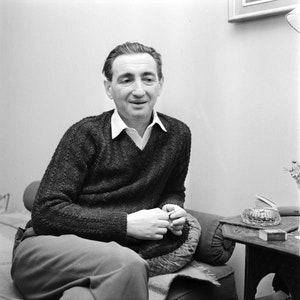
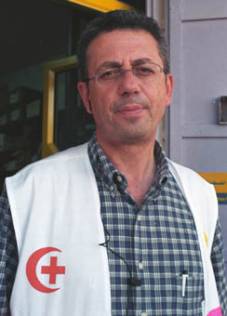
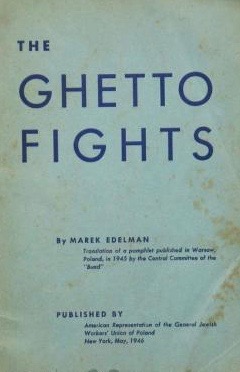
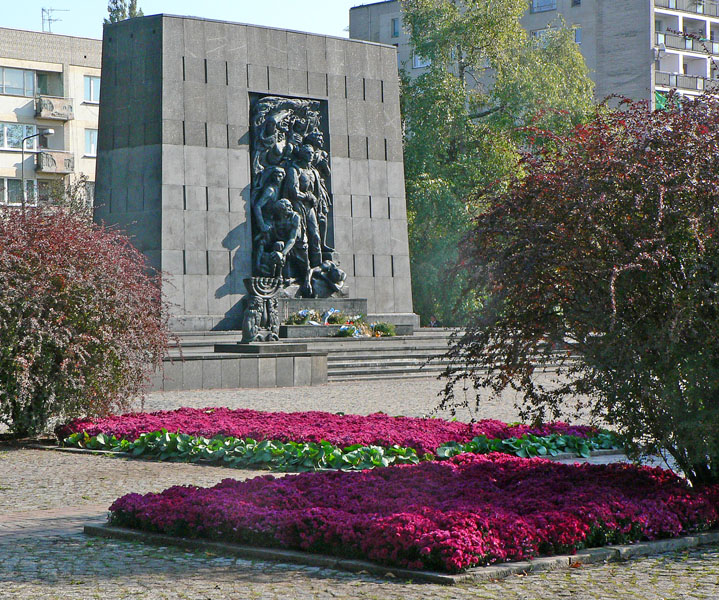
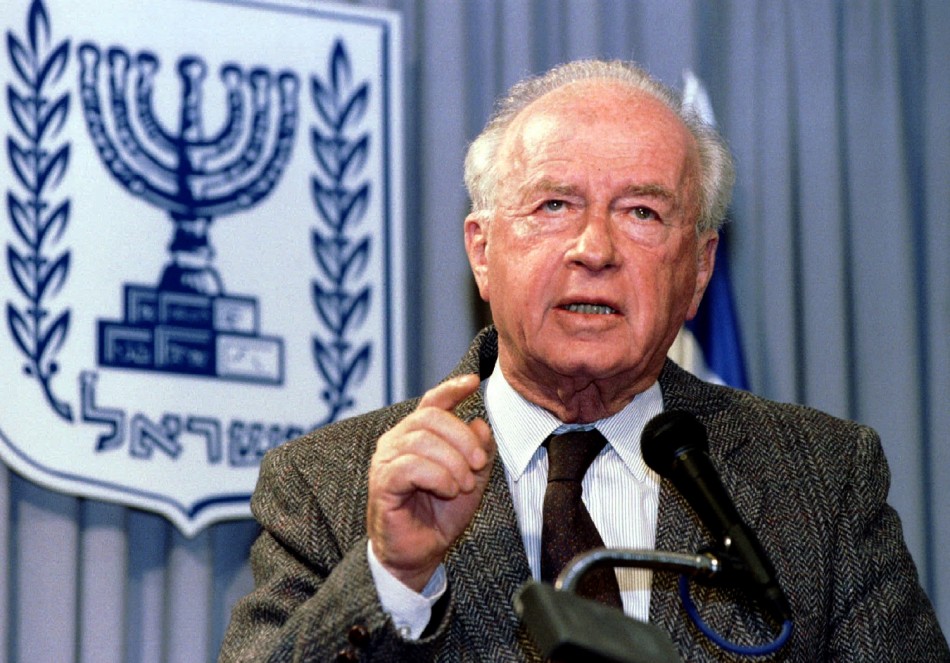
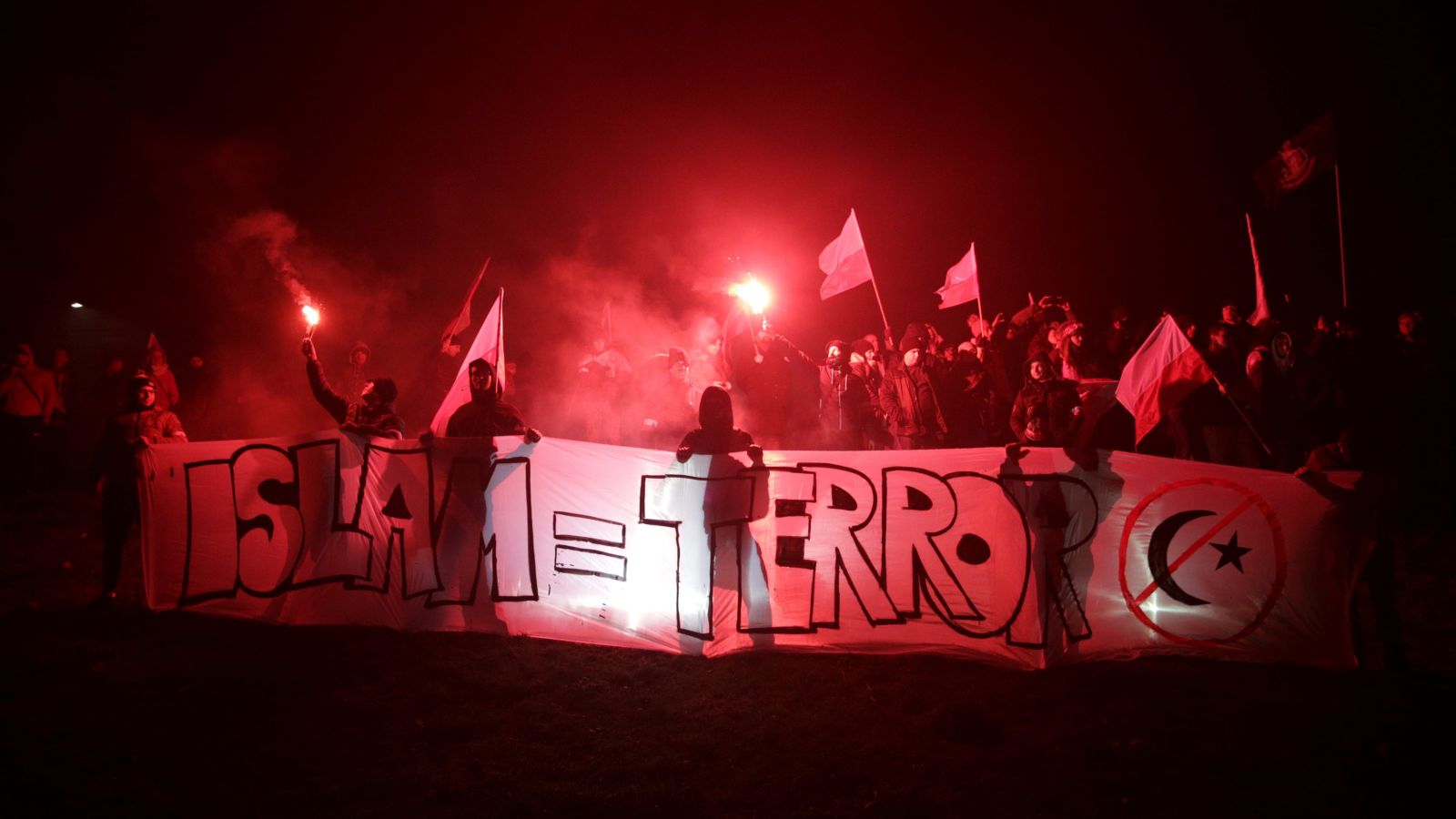 march through Warsaw. Marchers on this day have largely been right wing conservatives but more recently the fascist presence has grown substantially. Last November fascist groups were the most active mobilisers, with flags, banners, flares, chanting slogans. One banner said “Pray for Islamic Holocaust”. Groups were chanting “Jew-free Poland”. The fascists welcomed overseas visitors including Tommy Robinson.
march through Warsaw. Marchers on this day have largely been right wing conservatives but more recently the fascist presence has grown substantially. Last November fascist groups were the most active mobilisers, with flags, banners, flares, chanting slogans. One banner said “Pray for Islamic Holocaust”. Groups were chanting “Jew-free Poland”. The fascists welcomed overseas visitors including Tommy Robinson.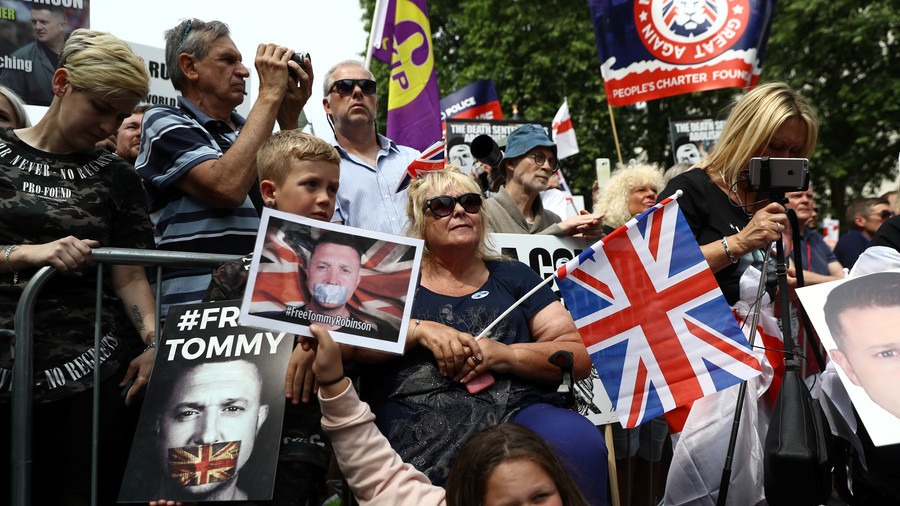 15,000 marched and rioted through central London in support of Tommy Robinson, vastly outnumbering less than 300 anti-fascists. Remnants of every small deeply ideological Nazi group from the last 30 years were there, joined by large groups of Islamophobic football thugs, Polish fascists and UKIP. UKIP’s temporary leader Gerard Batten makes speeches indistinguishable from the BNP – weaving together crude Islamophobia, anti-refugee sentiment with more subtle antisemitism.
15,000 marched and rioted through central London in support of Tommy Robinson, vastly outnumbering less than 300 anti-fascists. Remnants of every small deeply ideological Nazi group from the last 30 years were there, joined by large groups of Islamophobic football thugs, Polish fascists and UKIP. UKIP’s temporary leader Gerard Batten makes speeches indistinguishable from the BNP – weaving together crude Islamophobia, anti-refugee sentiment with more subtle antisemitism.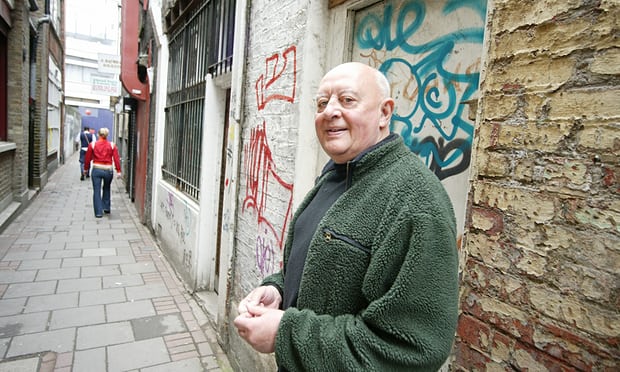
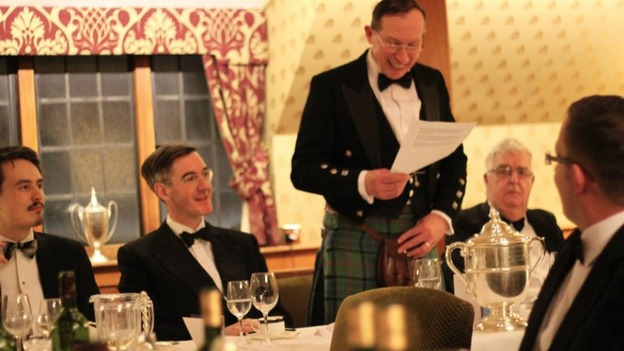
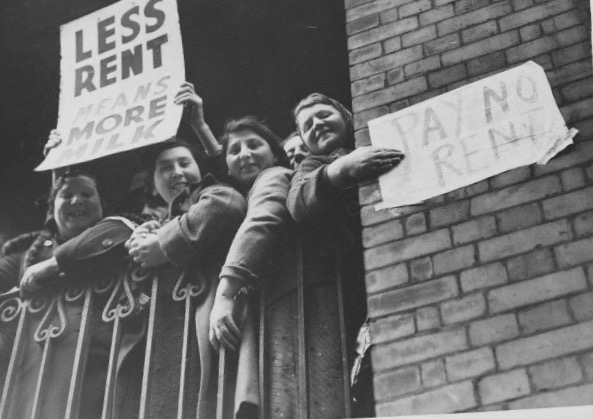
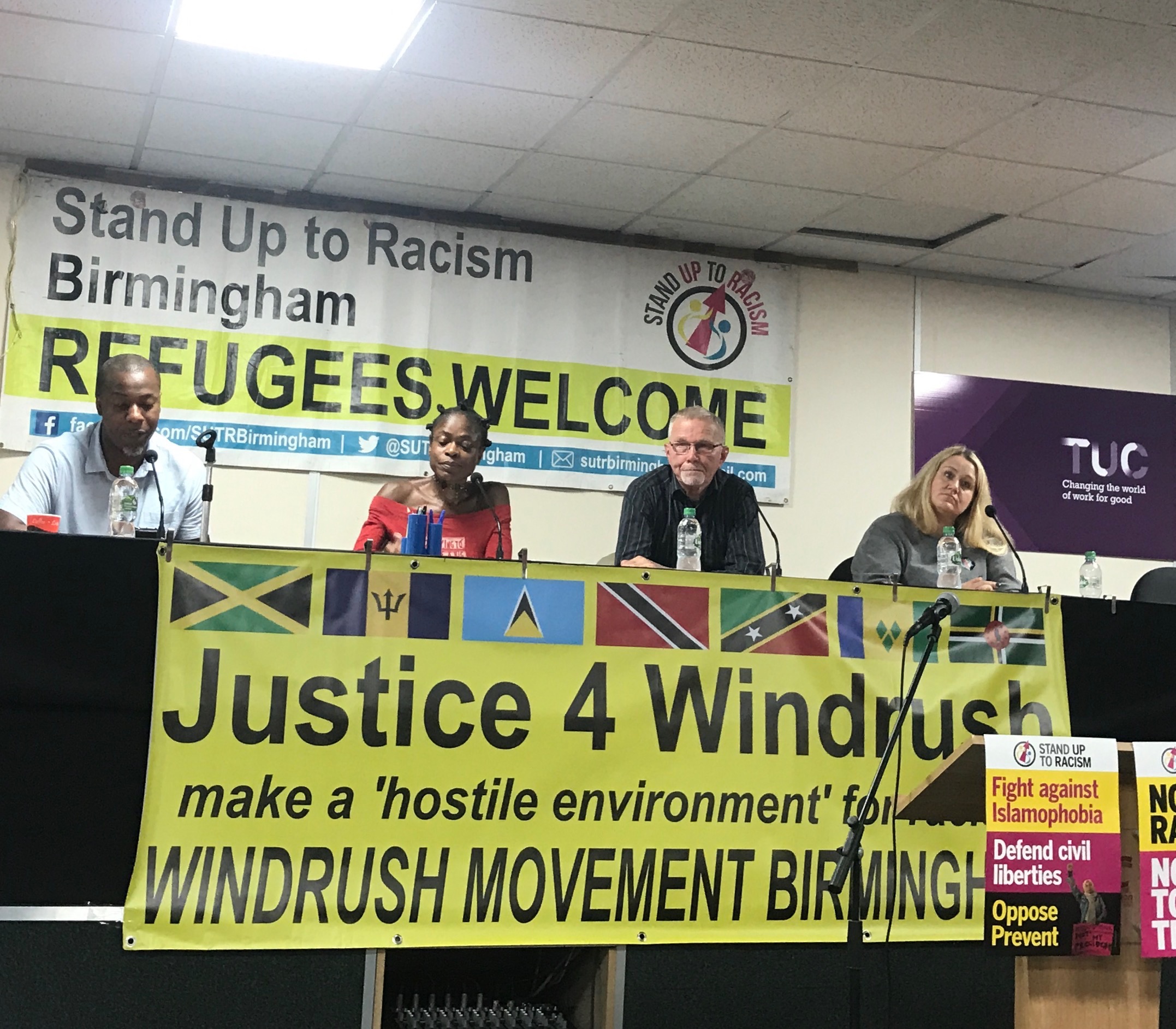
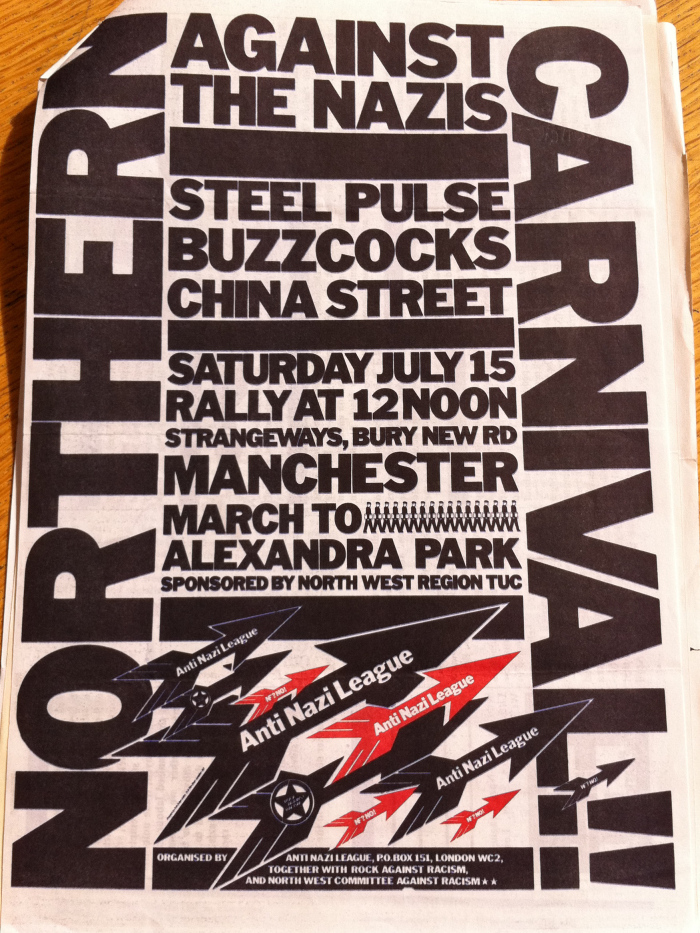 One of the great successes of the Anti-Nazi League when it was launched in 1977, was winning the endorsement of figures in sport, music and film who were influential in the lives of many young people. I would urge my comrades in UAF and SUTR to use their resources and experience and collaborate in building a bigger and broader national umbrella for national anti-racist and anti-fascist activity. But it is our ability to do patient work in our localities, that continually links and embeds the fight against racism and fascism with the fight for better lives for all – at work, in schools, in housing, in health – that will be decisive. Time is running out.
One of the great successes of the Anti-Nazi League when it was launched in 1977, was winning the endorsement of figures in sport, music and film who were influential in the lives of many young people. I would urge my comrades in UAF and SUTR to use their resources and experience and collaborate in building a bigger and broader national umbrella for national anti-racist and anti-fascist activity. But it is our ability to do patient work in our localities, that continually links and embeds the fight against racism and fascism with the fight for better lives for all – at work, in schools, in housing, in health – that will be decisive. Time is running out.